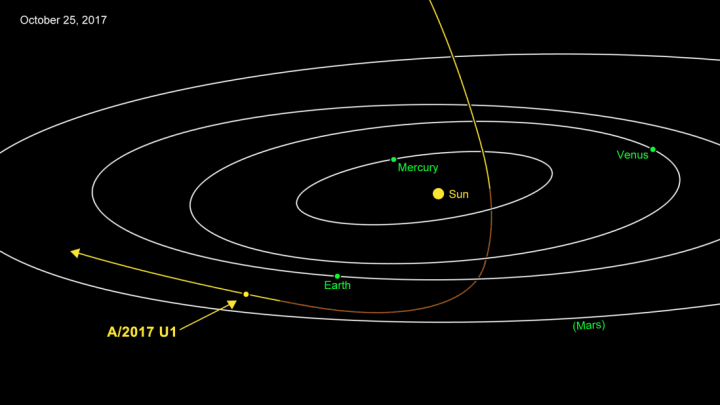On October 19, scientists using the University of Hawaii's Pan-STARRS 1 telescope spotted what resembled a small asteroid or comet. Judging from its movements, it wasn't a typical space rock. Unlike a normal asteroid or comet, the object was streaking too quickly through space to orbit the Sun. The researchers then realized that they'd likely caught sight of our first confirmed interstellar visitor, according to National Geographic.
The object is called A/2017 U1, and it's probably less than 1300 feet wide, according to NASA. It still hasn't been defined, composition-wise, but it could be the remains of an exoplanet. It may have been flung from a still-unknown star system long ago, and eventually journeyed through our solar system. Its existence is significant because it could provide scientists with new insights into how stars and planets form. These likely develop when chunks of rock and ice are hurtled into interstellar space, but until now, researchers had seen only tiny particles of this material.
Rob Weryk, a postdoctoral researcher at the University of Hawaii Institute for Astronomy (IfA), was reportedly the first to spot A/2017 U1, although he also compared notes with a second researcher, Marco Micheli, who observed the phenomenon through the European Space Agency's telescope in Spain's Canary Islands. After calculating the rock's trajectory and speed, Weryk reported the observation to the Minor Planet Center, which collects observational data for asteroids and comets.
"We have been waiting for this day for decades," Paul Chodas, manager of NASA's Center for Near-Earth Object Studies, said in a press statement. "It's long been theorized that such objects exist—asteroids or comets moving around between the stars and occasionally passing through our solar system—but this is the first such detection. So far, everything indicates this is likely an interstellar object, but more data would help to confirm it."
Right now, A/2017 U1 is speeding away from Earth at a rate of 98,000 miles an hour. It grows dimmer by the day—giving astronomers just a small window of time to study the remarkable discovery.
Learn more about how scientists spot near-Earth asteroids by watching NASA's video below.
[h/t National Geographic]
